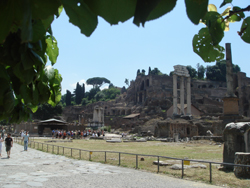Money
The Franc
The currency of Switzerland is
the Swiss Franc. The Swiss Franc which is divided into into
100 centimes (French), Rappen (German) or centesimi (Italian.)
CHF is the internationally used symbol.
Notes are available in denominations of 1,000CHF, 200CHF,
100CHF, 50CHF, 20CHF and 10CHF. Coins are issued to values
of 5CHF, 2CHF, 1CHF and 50 rappen, 20 rappen, 10 rappen and
5 rappen.
The Euro
As Switzerland is not part
of the European Union, the Euro (EUR) is not an official currency.
It is widely accepted in the major urban areas. Where the Euro
is accepted, you will usually only be able to pay with notes
and your change will be in Swiss Francs. You should make sure
you have Francs as not every establishment accepts Euros.
Currency exchange facilities are widely available at banks
and many train stations.
Credit cards
Major credit cards are widely accepted but you should have
cash with you just in case and to cover incidental expenses.
The Cantons
Switzerland has 23 full Cantons, of which three are sub-divided into half-cantons
giving a total of 26 Cantons. The Coats of Arms of the 23 full
Cantons are depicted in The Glass Dome in the Federal Palace
in Berne.
Switzerland was founded
in 1291 when the three forest cantons of Schwyz, Uri and Unterwalden
signed The Federal Charter - a defensive alliance. In later
years, other localities would join the Confederation. The last
expansion of Swiss territory was in 1815 although the last
Canton was created in 1978, seperated Canton Jura from Canton
Berne.
The 26 Cantons, their capitals and years of joing are:
| Canton |
Year of Joining |
Capital |
| Aargau |
1803 |
Aarau |
| Appenzell Innerhoden |
1513 |
Herisau |
| Appenzell Ausserhoden |
1513 |
Appenzell |
| Basel-Stadt |
1501 |
Basel |
| Basel-Landschaft |
1501 |
Liestal |
| Berne |
1353 |
Berne |
| Fribourg |
1481 |
Fribourg |
| Geneva |
1815 |
Geneva
|
| Glarus |
1352 |
Glarus |
| Graubünden |
1803 |
Chur |
| Jura |
1978 |
Delemont |
| Lucerne |
1332 |
Lucerne
|
| Nidwalden |
1291 |
Stans |
| Neuchâtel |
1815 |
Neuchâtel
|
| Obwalden |
1291 |
Sarnen |
| Schwyz |
1291 |
Schwyz |
| St Gallen |
1803 |
St Gallen
|
| Schaffhausen |
1501 |
Schaffhausen
|
| Solothurn |
1481 |
Schaffhausen
|
| Thurgau |
1803 |
Frauenfeld |
| Ticino |
1803 |
Bellinzona |
| Uri |
1291 |
Altdorf |
| Vaud |
1803 |
Lausanne
|
| Valais |
1815 |
Sion |
| Zug |
1352 |
Zug |
| Zürich |
1351 |
Zürich
|
 My personal advise on what to do and see in Rome
My personal advise on what to do and see in Rome
 Mt Egmont seen from the King Edward Park playing fields in Stratford
Mt Egmont seen from the King Edward Park playing fields in Stratford
 The Stratford Glockenspeil in Taranaki
The Stratford Glockenspeil in Taranaki
 The Antelope - your local, dog friendly, beer friendly pub
The Antelope - your local, dog friendly, beer friendly pub
 Must see ancient monuments around Rome
Must see ancient monuments around Rome
 Historical information about the gothic Antwerp Cathedral
Historical information about the gothic Antwerp Cathedral
 What to see, where to stay and eat in historic Antwerp
What to see, where to stay and eat in historic Antwerp
 Recommended hotels in Vienna, Salzburg and Bregenz
Recommended hotels in Vienna, Salzburg and Bregenz